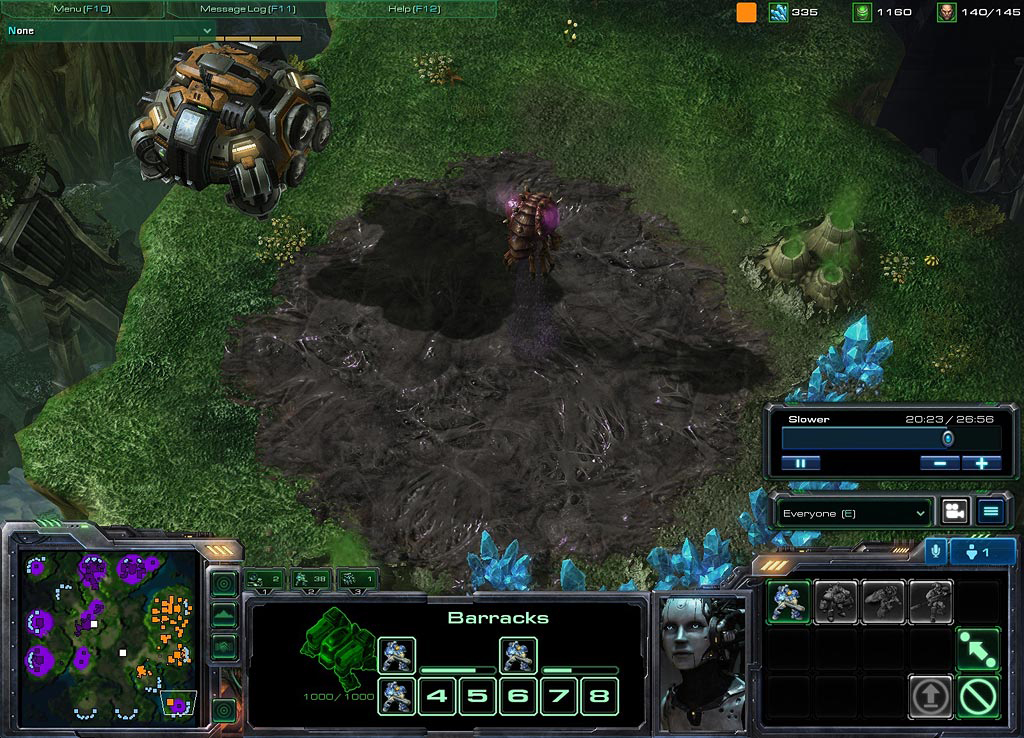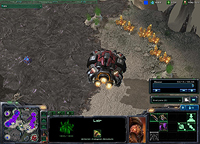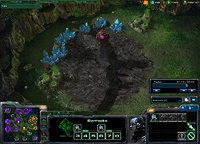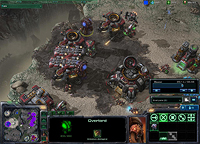Game Guide: Zerg: Creep

Zerg structures are effectively giant, living organs. To provide nourishment and infrastructure for their colonies, the zerg produce a living carpet of bio-matter that enemy forces have dubbed creep. Creep, produced by hatcheries, creep tumors, and overlords, spreads quickly across any ground area. The hatchery and the nydus worm exit are the only two structures that can be built on the map without needing existing creep. Creep itself is extremely durable and capable of near-instantaneous regeneration, only retreating from infested ground when a hatchery or other creep generator is destroyed. Zerg units move more quickly while on creep, and creep tumors grant vision to the controlling player.
Your units can aid in the creation of creep ‘highways’. Overlords have an ability called “generate creep,” which allows them to produce creep while they’re standing still.
Queens have the ability to spawn a creep tumor. Some zerg players create a line of overlords and creep tumors between their bases to generate creep, allowing their units to travel across the map more quickly. Covering a map with creep provides you with numerous benefits. Most prominently, you’ll find that you can see a larger portion of the battlefield, and that your units’ mobility is significantly increased. You’ll be able to scout more effectively and launch hit-and-run attacks more easily.
A creep tumor can produce an additional tumor a few seconds after it finishes. This allows you to spread your creep across the map without putting your overlords or queens in danger. The more creep tumors in a given area, the faster it will spread. To spread a high volume of creep quickly, use queens to build several tumors in one area and spread them all over the map once they finish, and continue to produce new tumors as available. Eventually, you’ll be able to see nearly the entire map!
A tumor that has not yet produced another tumor is considered “active.” When an active tumor produces another tumor, it becomes “inactive” and changes color. It will no longer be able to produce additional tumors, but it will continue to provide creep and vision.
Creep tumors are only visible to the opponent while they are being constructed. Once completed, the tumor will burrow and disappear from the enemy’s field of vision. In order for your opponent to push your creep back, they have to have some form of detection to locate and destroy the tumor.
Screenshots
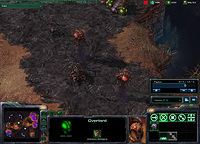 A line of creep is created between a base and its expansion. |
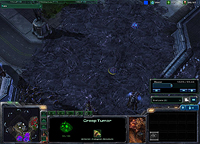 A zerg player uses a queen to lay down creep tumors. |
 Half of this map is covered in creep. |
|
Offensive Creeping
Creep prevents terran and protoss players from building structures on a particular space. As a zerg player, you can use this to your advantage to stop your enemies from building at expansions (or even in their own bases)!
You can deploy creep offensively by transporting a queen to a potential expansion site (via an overlord), building a creep tumor, and then leaving. If the creep has time to spread, it will prevent your enemy from building at that expansion for a while.
Offensive Building
If you’re battling another zerg player, you can build on their creep. This property can be exploited for sneak attacks; for example, you might sneak a drone into your enemy’s base early on in the game, build a spine crawler just out of their sight, and then walk it into attack range.
